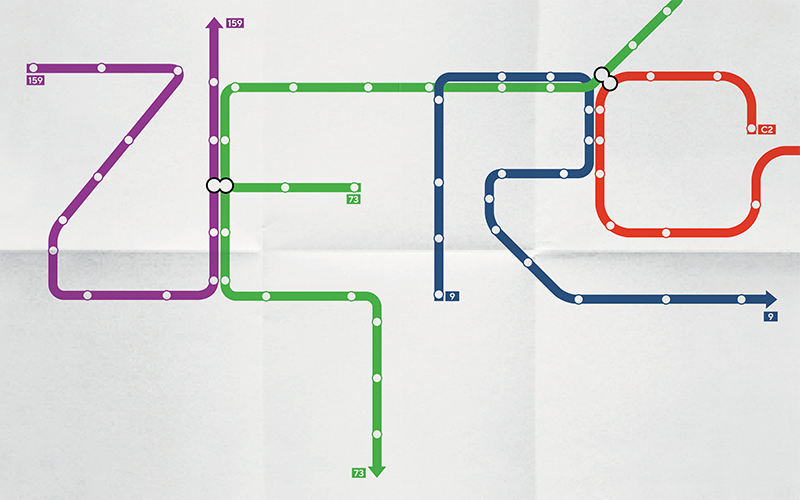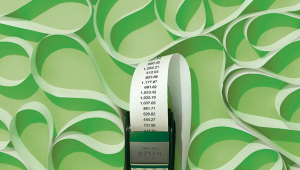
Were the hippies right? In the 1960s if you weren’t on the bus, you were part of the problem. Public bus transport is critical to net zero, but this means a rapid reinvention for the 21st century. Could public subsidies unlock their potential or is something else needed to increase passenger numbers?
Despite public bodies across the UK declaring climate emergencies and the government setting a statutory target to be net zero by 2050, progress on decarbonisation has slowed. The most recent carbon budget from the Climate Change Commission said a traffic reduction of 17% is needed to help meet the net-zero pledge.
Vernon Everitt, transport commissioner at the Greater Manchester Combined Authority, says buses have an important role in changing commuter behaviour away from car journeys.
He tells PF: “When you think about what city regions need to do, they need to offer decent alternatives to the use of cars.
“That is not an anti-car statement because many car journeys are absolutely necessary. But if you look at somewhere like the Greater Manchester region, around 60% of the journeys are by car.”
Ticket to ride
Prior to the explosion of car ownership in the UK from the late 1960s, buses were the key method of transport for people looking to travel short and longer distances. Between 1950 and 1970, bus mileage halved as cars became a more affordable and popular mode of transport.
What went wrong – and why?
Graham Parkhurst, director of the Centre for Transport and Society at the University of the West of England, says: “The heyday of the bus was partly about people being wealthy enough to do more leisure travel and to live further from work, but not yet wealthy enough to own cars,” he says.
The shift in car ownership from the late 1960s onwards led to the development of motorways and saw focus on buses wane, Parkhurst adds. “Since then, buses have struggled to have political capital,” he concludes.
Labour leader Harold Wilson’s harnessing of the “white heat” of a technological revolution at the 1963 party conference was boosted by Labour’s ties with trade unions linked to car production – accelerating the shift.
Peter White, emeritus professor of public transport systems at the University of Westminster, explains that despite lower use, there was no government strategy for buses until privatisation in 1985. “There was a tendency in the 1960s and 1970s to just accept the rise in car ownership, and allow public transport to decline,” he tells PF. “What was largely ignored was improved public transport, seen initially with rail with improved intercity services and later with some local improvements in the bus sector. We also failed to retain and modernise some of the transport systems like street tramways in larger cities, which could have been like the rapid transit systems in Europe.”
Parkhurst believes that the level of funding historically allocated to bus services is part of the problem. “One thing that’s never quite come across to me in transport policy by any government is that two-thirds of public transport trips are by bus, but the amount of money invested in rail is totally out of proportion,” he tells PF.
“It is partly about the role that bus and rail are perceived to play in the economy, and particularly the importance of central London. It also reflects the political priority of the rail system.”
All change
The national bus strategy published in March 2021 has moved transport authorities onto a partnership agreement, giving public bodies greater power over privately contracted services and allowing the flexibility to move to London-style franchises. The government has earmarked £3bn of funding to boost services through bus service improvement plans.
But recent research from the TUC claims that while current reforms are a good starting point, much higher investment would help reduce emissions and deliver £52bn of benefits to the economy every year.
“A transport infrastructure upgrade on this scale will more than pay for itself by helping to close the UK’s stubborn productivity gap with other advanced economies”
Kevin Rowan, TUC head of organisation and services, tells PF: “The capital expenditure needed is much higher than in the Bus Back Better plans, but the economic gains are much higher too. A transport infrastructure upgrade on this scale will more than pay for itself by helping to close the UK’s stubborn productivity gap with other advanced economies.”
However, Andrew Gibbons, head of public transport at Leicester City Council, argues that the transition away from competitive pots would hit more bus-friendly areas.
“If you had a formula-based approach, a lot of the total pot would go to areas where the council is not doing some of the key things it needs to do in order to encourage public transport,” he argues.
“There are plenty of councillors out there who are still supporting very car-based economies, and they have got low bus uses.
“With competitive bidding, if it is done properly, most of the money would be invested in areas that deliver the best returns – and, by and large, those would be areas with already high bus patronage.”
The Campaign for Better Transport claims the current funding model, which relies on councils bidding for competitive pots, favours better-resourced authorities and should be scrapped.
A spokesperson argues: “Instead of asking local authorities to compete, the government should put in place a long-term funding settlement for all local transport bodies.
“We need more frequent buses and cheaper tickets, so a greater proportion of government funding for buses should be revenue funding, rather than capital funding for one-off projects like bus stations. To pay for this, the government should reallocate money from high-carbon transport like road building into a single funding pot for buses.”
Everitt adds that reforms should focus on integrating travel offers to improve access and affordability and encourage use.
“The whole idea behind integrating public transport so that you have a coherent offer with single ticketing, single means of payment and integrated fares is to attract more people to use more sustainable modes,” he says.
“On the public transport side of things, particularly in the greater Manchester region, it means buses, trains, trams, and for active travel it means walking and cycling. Having an integrated bus network as part of the wider public transport offer is absolutely essential.”
Routemasters
Parkhurst says that bus policy is key to tipping the balance on the transition to net zero, because of the duration of rail network improvements.
“We have got 27 years to meet targets, and light rail schemes will take at least 10 years to complete,” he continues. “The earlier we start reducing emissions, the easier the task. So the bus offers us a way of increasing public transport capacity and much more quickly, at relatively affordable costs.”
Iain Stewart, chair of the Commons transport committee, says the government needs to be more ambitious, including long-term funding for zero-emission buses: “If the government wants to make ZEBs a key part of the UK’s transition to net zero, it needs to set out a plan for a full transition to them, including a long-term and clear funding plan that also supports the installation of costly new electric vehicle infrastructure,” he adds.
“Of course, transport decarbonisation is not only about new vehicles. Alongside the switch to ZEBs, we also need to make buses a good option for passengers. If bus services are infrequent and unreliable, many will prefer to stay in their cars.”
Parkhurst adds that while ZEBs are the next step, the lack of central government funding is a barrier to progress. “There is always a tension here – councils want certainty over funding, and the Treasury doesn’t like having its hands tied,” he says. “Ultimately, the lifespan of a bus is about 15 years, so you want some certainty over funding. If the government could push out that funding horizon and give more local control over how it is spent, that will be a good thing.”
“Currently, 60% of journeys are by car and 40% by more sustainable modes, and our aim is to get that to 50-50. But that shift is a million journeys a day from cars onto public transport”
Meanwhile, Matt Edwards, transport and healthy streets spokesperson at the Green Party, argues that the focus of profitability in public transport has skewed policies. “It is completely ridiculous that we use roads as a service and public transport as a potential business,” he tells PF. “Most councils in the UK have a highways department and a separate transport department, but in Europe they have a mobility department that combines all transport. We seem to have compartmentalised it, and that has hit people in rural areas the hardest.”
Does the solution lie beyond local boundaries?
Everitt concludes that buses are crucial to giving residents affordable and dependable services into regional hubs to reduce the reliance on cars.
“The long and short of it is that the efficient, affordable, reliable bus service is absolutely central to delivering that mode shift,” he says. “Currently, 60% of journeys are by car and 40% by more sustainable modes, and our aim is to get that to 50-50. But that shift is a million journeys a day from cars onto public transport, and the only way you can do that is by offering an affordable, reliable and safe alternative.”
Sustainable Transport
Doubling up
You don’t see a bus for ages and then they all show up at once. But geography, infrastructure and culture decide who’s getting on board.
In the EU, 55.7% of all public transport journeys (or 32.1 billion passenger journeys per year) are on urban and sub-urban buses.
But in the US, Greyhound carries over 18 million passengers against 630 million that airlines transport, according to the Bureau of Transportation Statistics.
The number of new buses built around the world was 165,819 units in 2022. The most popular was inevitably the double-decker. Half of the global fleet runs on diesel, according to UITP, the International Association of Public Transport. An additional 22% of the buses consume diesel combined with some additives or biodiesel. Electric buses account for almost 18%.
The countries with the highest public transit use are shown here. Mind the doors…




















